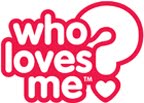From the moment they’re born babies love to look at faces. Despite not being able to focus properly for the first few weeks of life, studies have shown that babies prefer looking at faces more than any other object. Unsurprisingly they prefer their mummy’s face to anyone else’s, but it has even been proven that they prefer ‘good-looking’ faces to less attractive ones and that they show a preference for happy faces and faces with open eyes. Who says babies aren’t clever?!
"Babies are hardwired to recognize faces, which helps them connect with their caregiver early on" says Michael Frank, a brain and cognitive sciences researcher at the Massachusetts Institute of Technology "They like to look at anything that resembles a face, even something as abstract as an electrical outlet." [1]
Just about anyone who has come into contact with a baby has proved the theory by playing various games with them – think of peekaboo (they stop smiling when you disappear!), pulling faces at them or in the mirror with them (induces hysterical giggles) or waving your hand in front of your face and ‘pulling’ a smile up or a frown down (usually met with wide eyed amazement). They just love to look at your face – it can hold their attention for as long as you want to play the game (or until it’s time for a sleep or a feed, whatever comes first!) – especially if your eyes are really wide open and your smile is equally as big.
This fascination starts from birth. In one experiment researchers showed videos of women’s faces to babies of just 12 - 36 hours old, and the babies had a clear preference for watching their mothers’ faces rather than those of strangers (particularly impressive when you consider that at this age they can really only see an outline with a blurry centre). And the appeal continues as the baby develops – they are able to pay attention to individual facial features at about 6 weeks old, at about 3 months your baby can keep your face in their memory for about 24 hours[2] and they are able to copy facial expressions from about 6 months old.
So, we know they love looking at faces. It has been tested by a lot of scientists (and they’re a clever bunch), and we’ve seen it for ourselves (and we’re pretty smart too). But why?
The main theory is this. Primarily we are social creatures and face recognition is thought to encourage social behaviour in babies and help with development of social skills later on. "Babies are born with a fairly detailed representation of the average human face that helps them recognise familiar faces and also helps them learn about the social world" says Dr Alan Slater, a psychologist at Exeter University.[3]
There are two elements to this. Firstly face recognition means, quite simply and obviously, that we are able to recognise others – invaluable for a baby who is completely dependent on others for its survival, but clearly important throughout life (imagine if you, the adult, forgot everyone the moment they left the room?). Secondly we use faces as a way of communication through both eye contact, which “helps establish a communicative link between two people” [4] and facial expressions. Researchers have even found that infants under 8 months old may rely on visual cues to differentiate between foreign languages![5] It is therefore very important for a child’s development that they have had a lot of practice looking at faces and reading expressions from a young age.
So babies love looking at faces both for social interaction and for developing communication skills for later life. That really does make sense. But I also like the theory that “looking into someone's eyes is a necessity for falling in love” [6]. Maybe they just like looking at faces to show their mummy they love them!



Very cute idea. And a really interesting post.
ReplyDeleteThank you. I loved your gallery post too! X
ReplyDelete